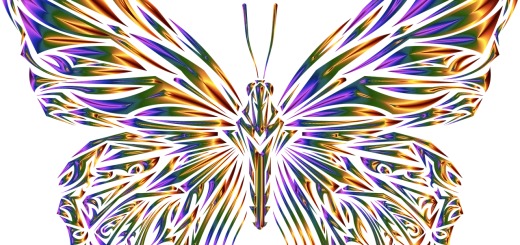Anzû: Mythical Bird Demon and Storm God’s Stealer

Looking for more amazing products? Check out our online store and explore our collection here! Happy shopping!
Before diving in, please note: This post is for informational purposes only. If you’d like to know more about how we approach topics, feel free to check out our friendly Disclaimer Page.
Hey there, amazing readers! 
We’re committed to delivering quality posts, and your support (even just sticking around despite the ads) means everything to us. So, bear with us, and thanks for helping us keep the good vibes rolling. Now, on to the fun stuff!
TRANSLATE BUTTON AT THE END OF THE ARTICLE
Overview
Anzû, the mythical bird demon and storm god’s stealer, holds a significant place in Mesopotamian mythology.
This monstrous creature is known for its role in ancient religious texts and its symbolic significance in Mesopotamian culture.
In this article, we will delve into the origins and legends surrounding Anzû, explore its appearance and role in ancient Mesopotamian religion, and uncover its notorious deed of stealing the Tablets of Destiny.
We will also examine the aftermath of Anzû’s defeat and its symbolic significance in Mesopotamian culture.
Additionally, we will discuss artistic depictions of Anzû, its influence on other mythological creatures and folklore, and its legacy and continued fascination in the present day.
Origins and Legends Surrounding Anzû
The origins of Anzû can be traced back to ancient Mesopotamia, specifically to the Sumerian civilization, which thrived around 4,000 to 2,000 BCE.
The story of Anzû is primarily known from the Babylonian and Assyrian texts, where it is mentioned in various myths and epics.
One of the most famous accounts of Anzû can be found in the "Epic of Ninurta," a Babylonian epic poem that tells the story of the battle between the storm god Ninurta and the bird demon.
According to the legends, Anzû was born from the union of the god of the heavens, Anu, and the goddess of the earth, Ki.
This made Anzû a significant figure in the pantheon of Mesopotamian deities.
However, Anzû soon became known for its rebellious nature, challenging the authority of the gods and causing chaos in the mortal realm.
Anzû: A Fearsome Bird Demon in Mesopotamian Mythology
Anzû is often depicted as a fearsome and monstrous bird demon in Mesopotamian mythology.
It is described as having the body of a lion or an eagle, with powerful wings and sharp talons.
Some accounts also mention that Anzû had the ability to breathe fire, adding to its terrifying appearance.
Legends describe Anzû as a creature of immense strength and power, capable of causing destructive storms and chaos.
It is said to be able to block out the sun with its massive wings, bringing darkness and despair to the land.
Anzû’s ferocity and supernatural abilities made it a formidable opponent for the gods.
Anzû’s Appearance: A Monstrous Creature with Unique Features
Anzû’s appearance is often described in vivid detail in ancient Mesopotamian texts and artwork.
The creature is typically depicted with the body of a lion or an eagle, symbolizing its strength and agility.
Its wings are described as massive and powerful, enabling Anzû to soar through the skies with great speed.
The creature’s head is adorned with a menacing beak and sharp, eagle-like talons.
Some depictions of Anzû also portray it with horns or a crown, symbolizing its divine nature as the offspring of Anu and Ki.
The overall depiction of Anzû showcases its monstrous and awe-inspiring presence, striking fear into the hearts of mortals and gods alike.
The Role of Anzû in Ancient Mesopotamian Religion
In ancient Mesopotamian religion, Anzû played a significant role as a fearsome deity associated with storms, chaos, and divine punishment.
It was often seen as a force of divine retribution, punishing mortals for their transgressions against the gods.
Anzû’s association with storms and chaos also made it a symbol of the unpredictability and destructive power of nature.
Ancient Mesopotamians believed that by appeasing Anzû through rituals and offerings, they could protect themselves from its wrath and ensure the favor of the gods.
Anzû and the Epic of Ninurta: A Battle for Divine Power
One of the most prominent stories involving Anzû is the Epic of Ninurta.
In this epic, the bird demon steals the Tablets of Destiny, which bestowed ultimate power and authority upon the gods.
Anzû’s audacious act threatened to plunge the world into chaos and upset the divine order.
The storm god Ninurta, upon learning about the theft, embarks on a quest to retrieve the Tablets of Destiny and defeat Anzû.
The epic chronicles their epic battle, showcasing the immense power and bravery of both deities.
The conflict between Anzû and Ninurta symbolizes the struggle for divine power and the importance of maintaining order in the cosmos.
Anzû’s Notorious Deed: Stealing the Tablets of Destiny
Anzû’s most notorious deed was stealing the Tablets of Destiny from the gods.
These tablets were believed to hold the fate and destiny of the entire universe.
With the tablets in its possession, Anzû wielded ultimate power and control over the cosmos.
The theft of the Tablets of Destiny by Anzû caused great turmoil among the gods and threatened the balance of the world.
The gods feared that without the tablets, chaos would reign and their divine authority would be diminished.
This act of defiance by Anzû marked a significant challenge to the gods’ dominion and sparked the epic battle with Ninurta.
The Aftermath: Anzû’s Defeat and the Restoration of Order
After a fierce battle, Ninurta managed to defeat Anzû and reclaim the Tablets of Destiny.
With the return of the tablets to the gods, order and balance were restored in the cosmos.
Anzû’s defeat served as a reminder of the gods’ power and the importance of maintaining divine authority.
The defeat of Anzû also reinforced the belief in the Mesopotamian worldview that chaos and rebellion against the gods would ultimately be quelled and order would prevail.
It served as a cautionary tale for mortals, highlighting the consequences of challenging divine authority and disrupting cosmic harmony.
Anzû’s Symbolic Significance in Mesopotamian Culture
Anzû held significant symbolic significance in Mesopotamian culture.
As a powerful and dangerous creature, Anzû represented the forces of chaos and unpredictability in the world.
Its defeat by Ninurta symbolized the triumph of order over chaos, reinforcing the importance of maintaining social, religious, and cosmic order in ancient Mesopotamian society.
Anzû’s association with storms and divine punishment also made it a symbol of the gods’ power and the consequences of disobedience.
Its depiction in Mesopotamian art and literature served as a reminder of the gods’ watchful presence and their ability to enforce justice and maintain cosmic balance.
Artistic Depictions of Anzû: From Ancient Carvings to Modern Art
Anzû has been depicted in various forms of Mesopotamian art, ranging from ancient carvings to modern interpretations.
In ancient reliefs and sculptures, Anzû is often portrayed as a monstrous bird demon with distinct features such as wings, talons, and a menacing beak.
These artistic representations aimed to capture the fearsome and awe-inspiring nature of Anzû.
In modern times, artists and enthusiasts continue to be fascinated by Anzû’s mythological significance, resulting in various interpretations of the creature.
These depictions can be found in sculptures, paintings, and even in popular culture, where Anzû has made appearances in video games and fantasy literature.
The enduring presence of Anzû in artistic expressions reflects the ongoing fascination with Mesopotamian mythology and its mythical creatures.
Anzû’s Influence on Other Mythological Creatures and Folklore
Anzû’s mythological legacy extends beyond Mesopotamian culture.
It has influenced the development of other mythological creatures and folklore around the world.
The concept of a bird-like creature possessing great power and ferocity can be seen in various mythologies, such as the Roc in Arabian mythology and the Thunderbird in Native American folklore.
The idea of a creature stealing divine artifacts or symbols of power can also be traced back to Anzû’s theft of the Tablets of Destiny.
This motif appears in different mythologies, demonstrating the lasting impact of Anzû’s story on the collective human imagination.
Anzû Today: Legacy and Continued Fascination with the Mythical Bird Demon
Despite the passage of millennia, Anzû remains a fascinating and influential figure in mythological studies and popular culture.
Scholars continue to explore the nuances of its story and its significance within ancient Mesopotamian religion and society.
The enduring fascination with Anzû showcases the timeless appeal of mythical creatures and their ability to captivate the human imagination.
In conclusion, Anzû, the mythical bird demon and storm god’s stealer, holds a prominent place in Mesopotamian mythology.
Its origins, appearance, and role in ancient religious texts have left a lasting impression on the cultural and artistic expressions of the region.
Anzû’s symbolic significance as a representation of chaos, divine punishment, and the struggle for power continues to captivate scholars and enthusiasts alike.
As we delve into the rich tapestry of Mesopotamian mythology, Anzû stands as a testament to the enduring power of ancient legends and the universal human fascination with the supernatural.

The Enlightenment Journey is a remarkable collection of writings authored by a distinguished group of experts in the fields of spirituality, new age, and esoteric knowledge.
This anthology features a diverse assembly of well-experienced authors who bring their profound insights and credible perspectives to the forefront.
Each contributor possesses a wealth of knowledge and wisdom, making them authorities in their respective domains.
Together, they offer readers a transformative journey into the realms of spiritual growth, self-discovery, and esoteric enlightenment.
The Enlightenment Journey is a testament to the collective expertise of these luminaries, providing readers with a rich tapestry of ideas and information to illuminate their spiritual path.
Our Diverse Expertise
While our primary focus is on spirituality and esotericism, we are equally passionate about exploring a wide range of other topics and niches 

To ensure we provide the most accurate and valuable insights, we collaborate with trusted experts in their respective domains 
Our blog originally focused on spirituality and metaphysics, but we’ve since expanded to cover a wide range of niches. Don’t worry—we continue to publish a lot of articles on spirituality! Frequently visit our blog to explore our diverse content and stay tuned for more insightful reads.
Hey there, amazing reader! 
Check out our store here and take a peek at some of our featured products below! Thanks for being awesome!












